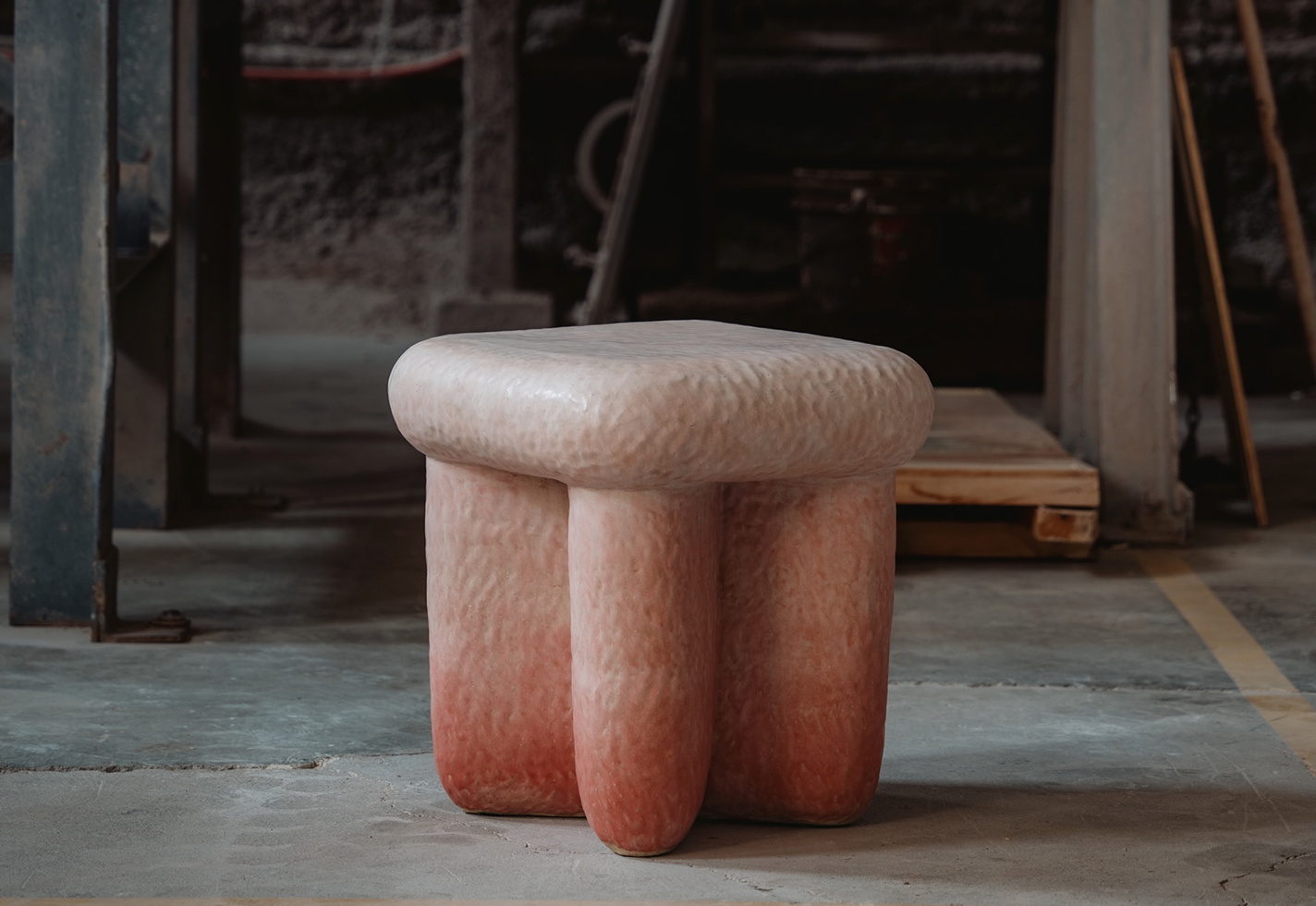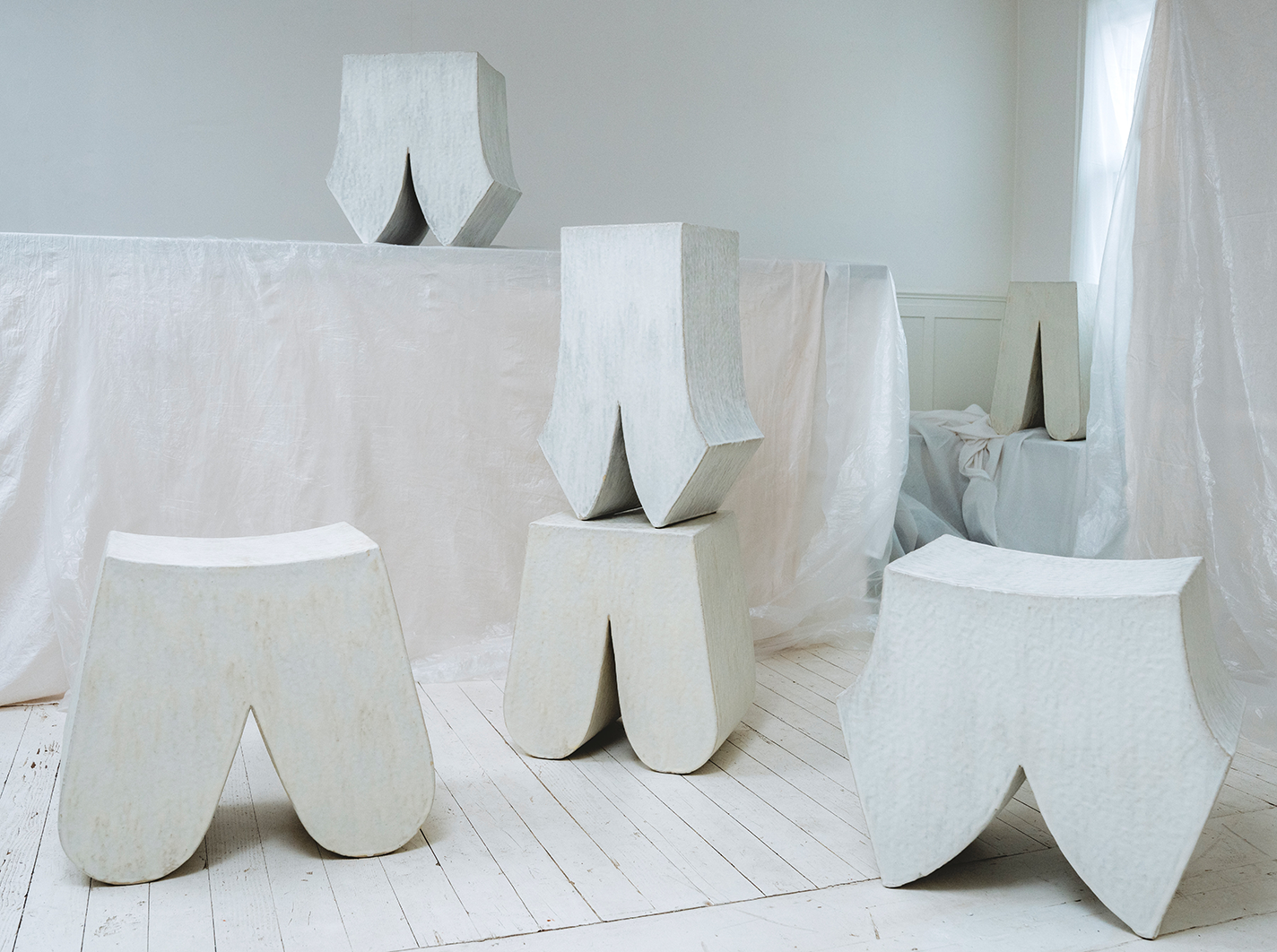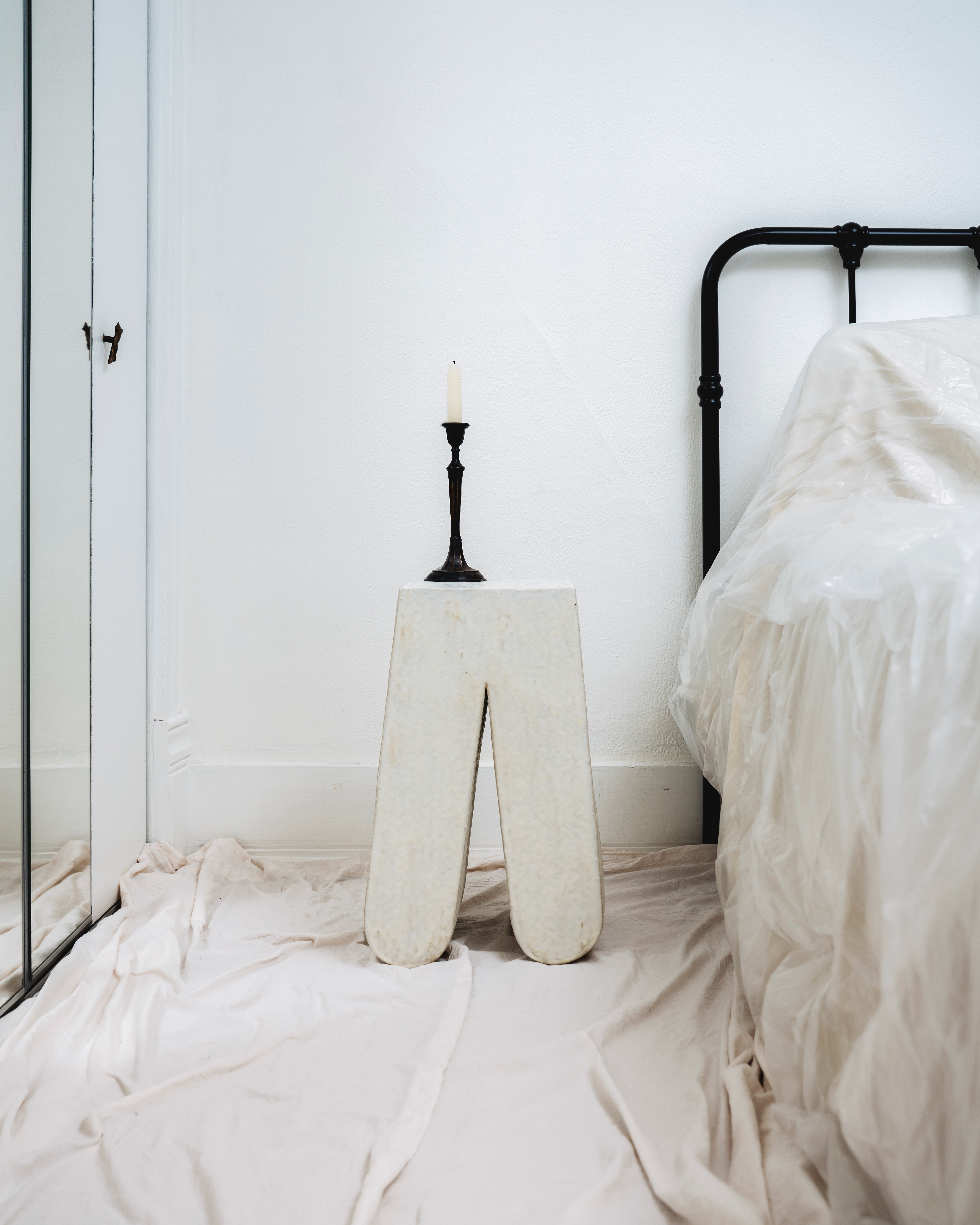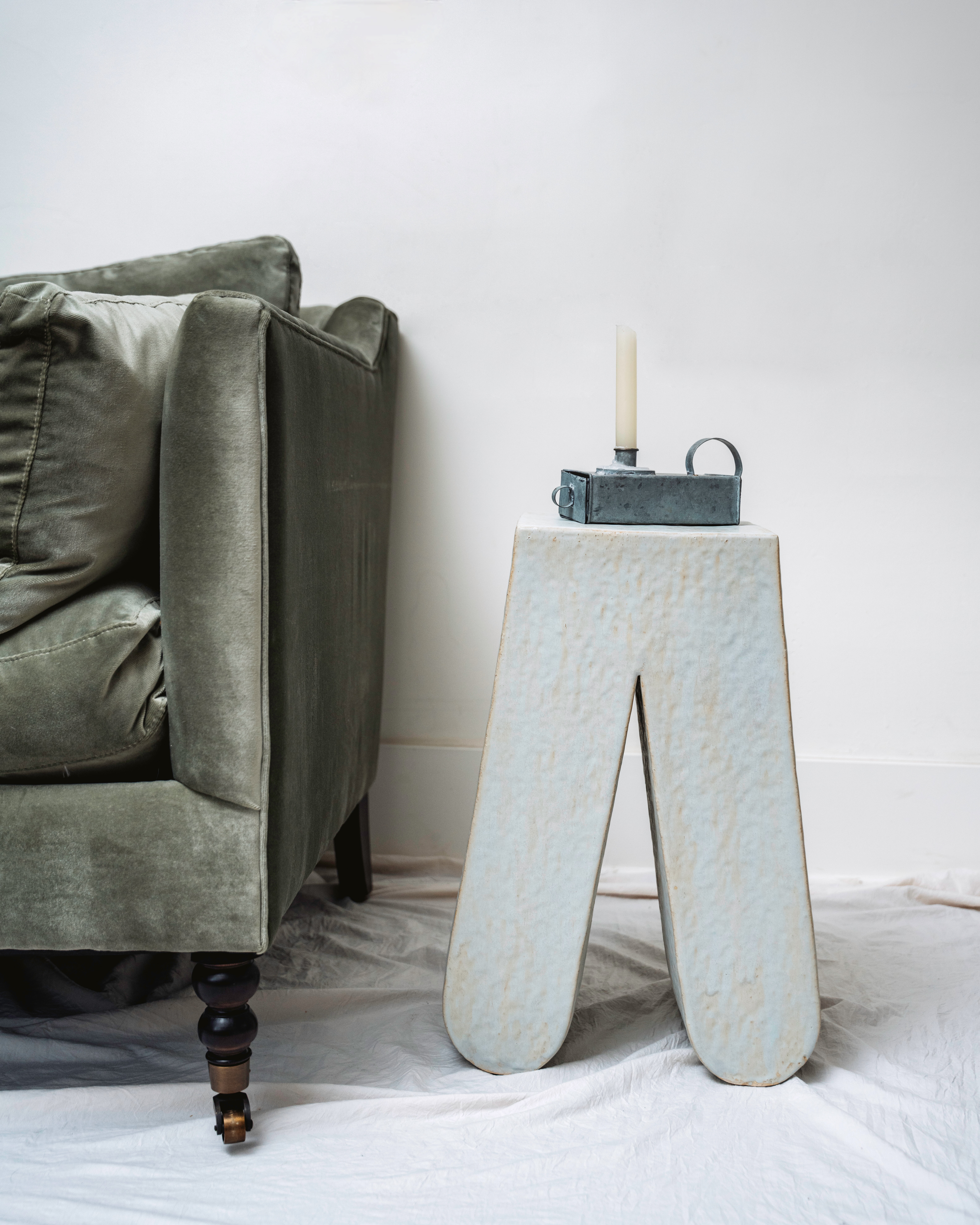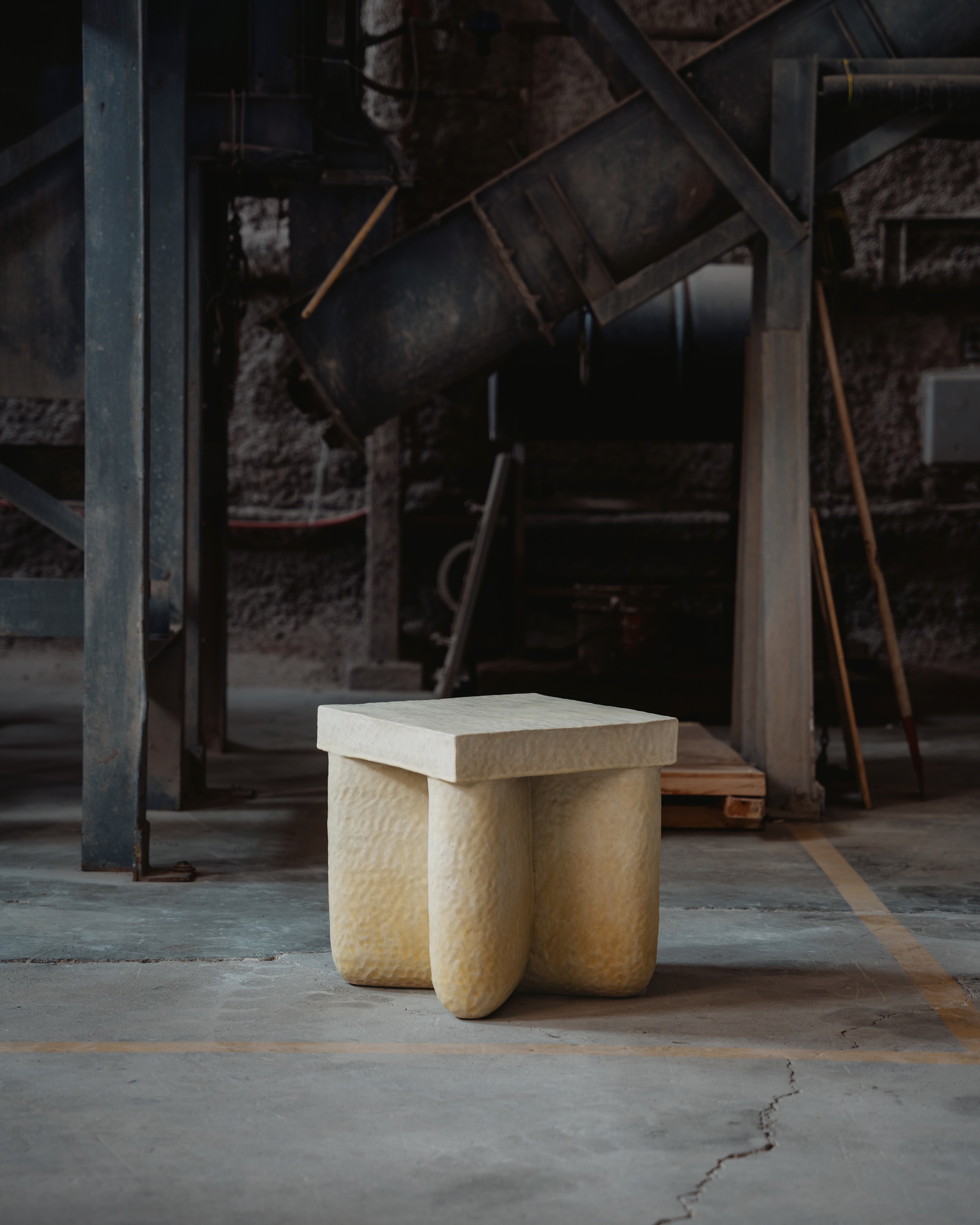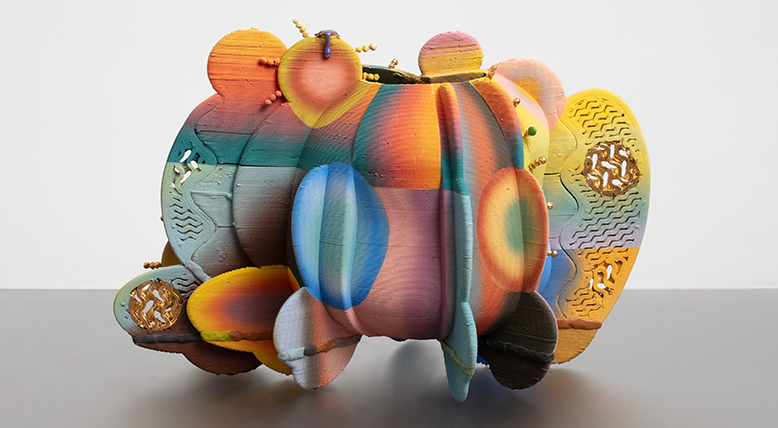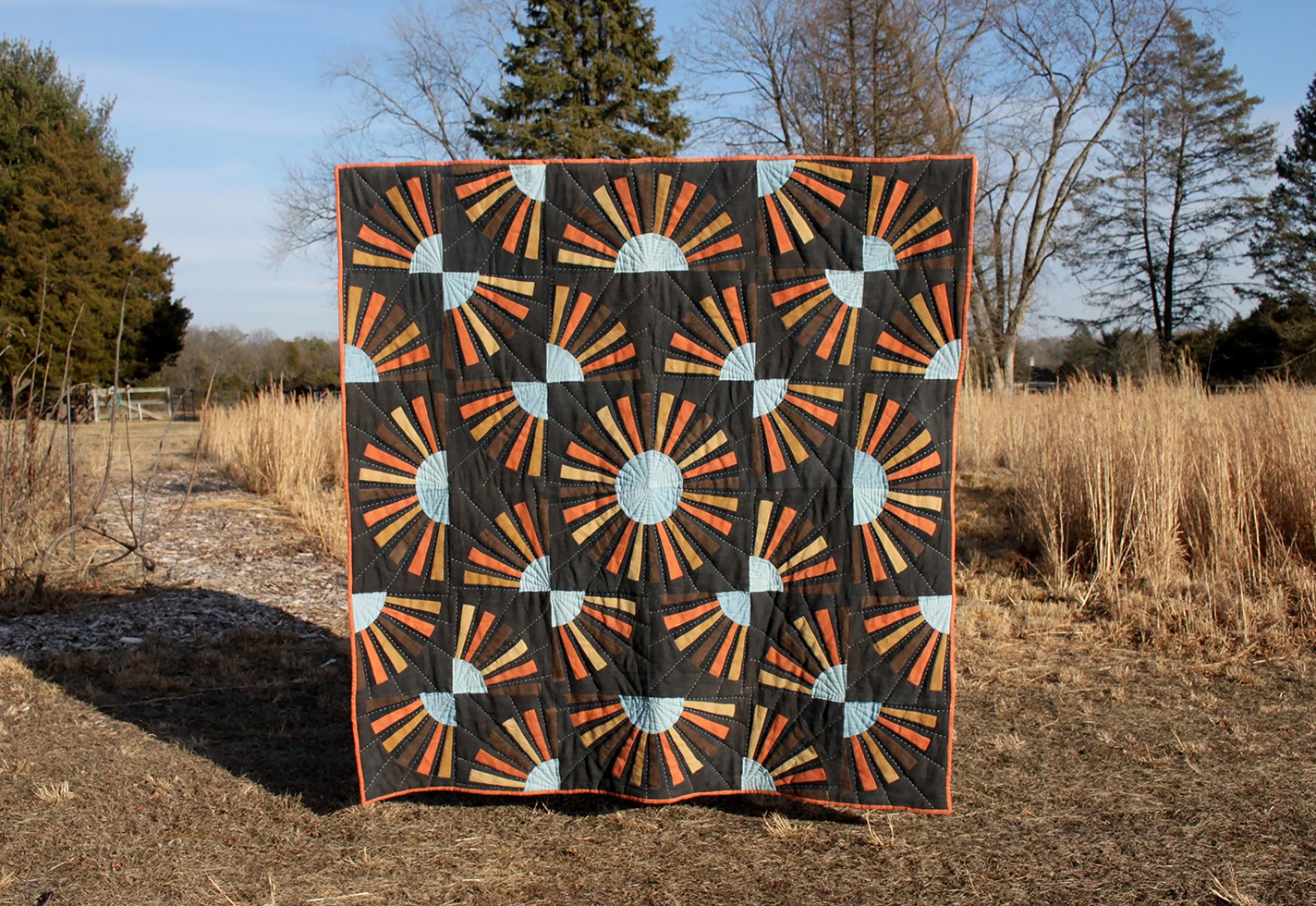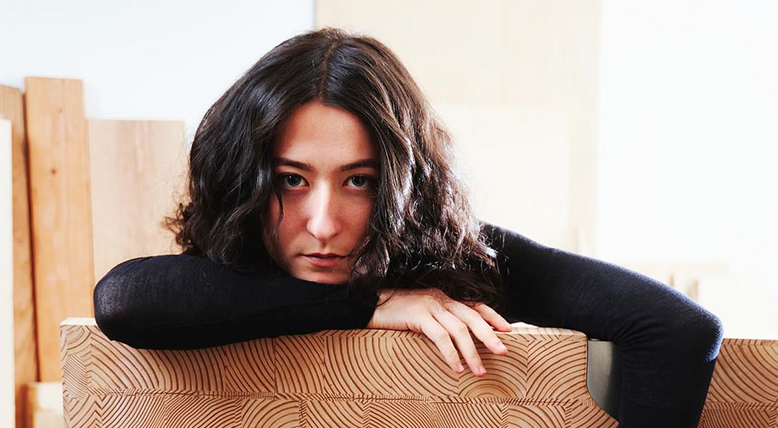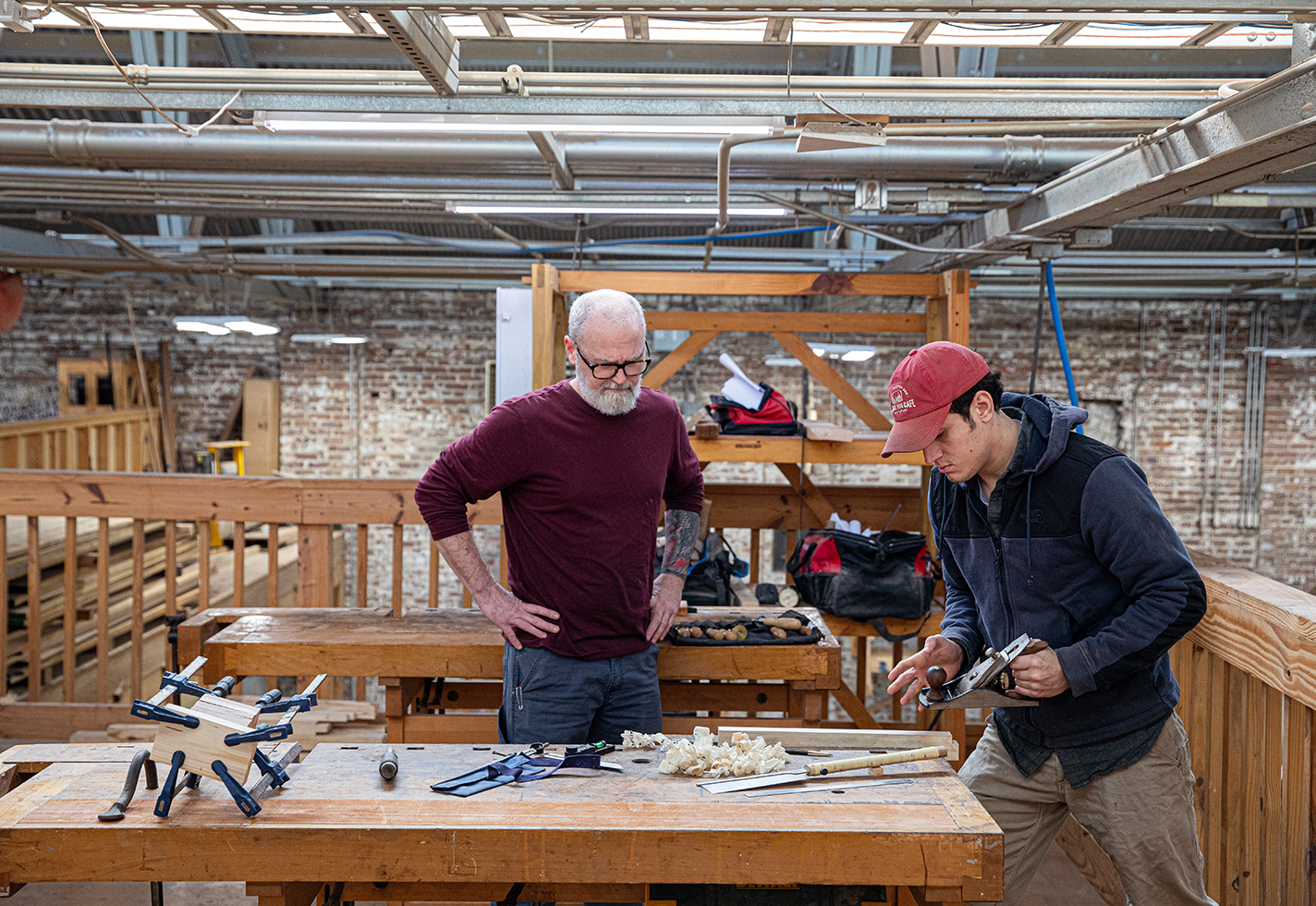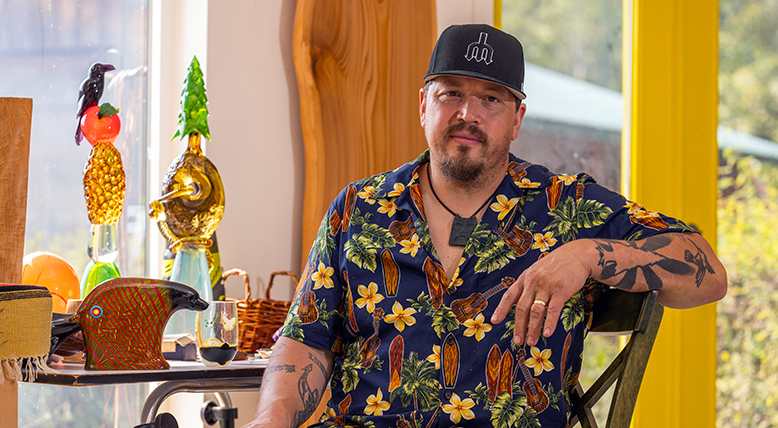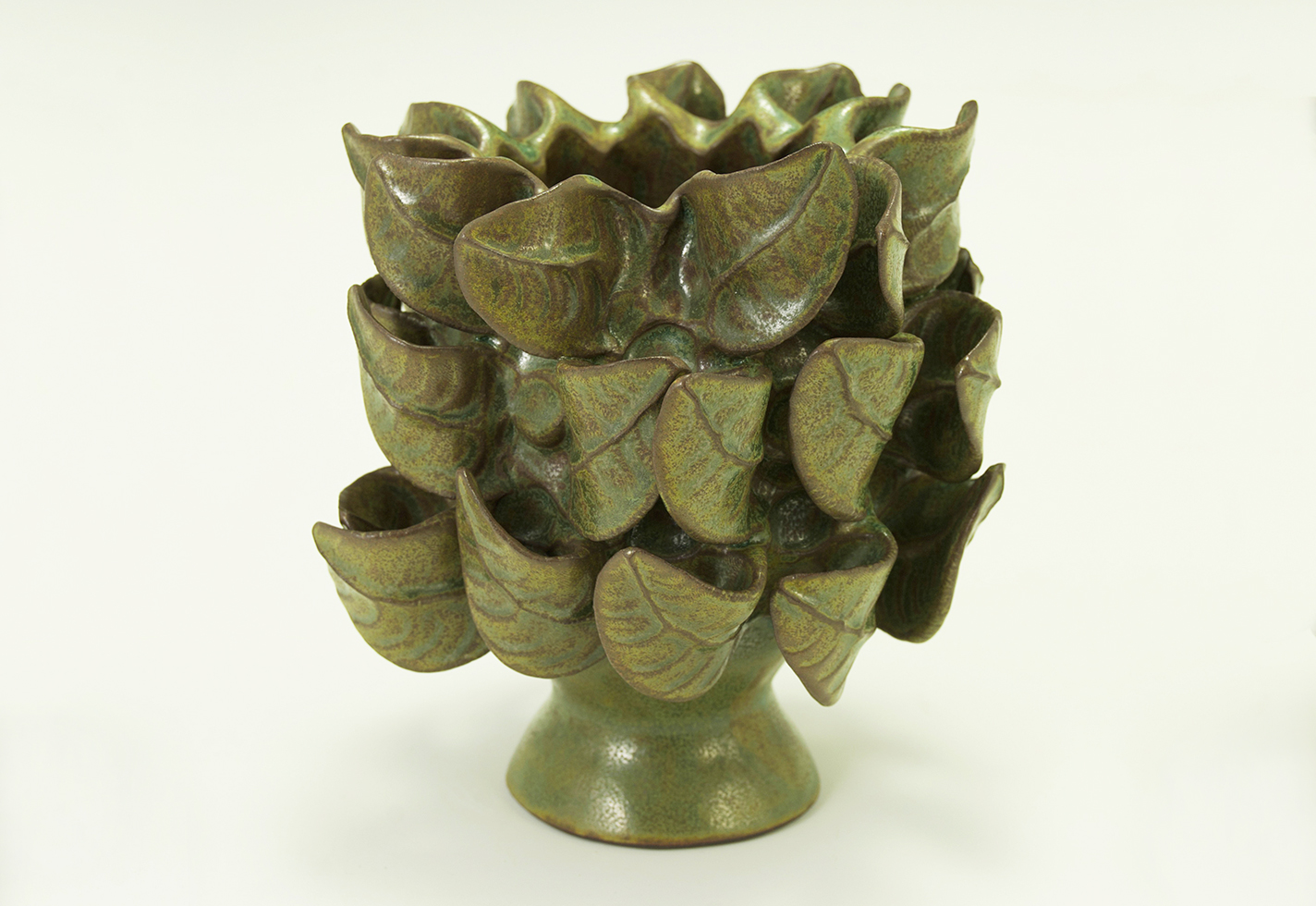Kelsie Rudolph traces her interest in craft and design to her childhood.
“My parents invested in a collection of Gustav Stickley furniture when I was quite young,” she says. “Oftentimes we would rearrange the furniture in the living room.” Today, in the small city of Helena, Montana, Rudolph has ample space to dream up new furniture—and to make it. In a top-loading kiln in her garage-turned-studio, she makes subtly textured ceramic chairs, tables, and lighting, striking a balance between the approachable appearances of her objects and the reality of the material. After studying art as an undergrad and earning an MFA in 2018, Rudolph apprenticed under Hun Chung Lee in South Korea. Upon returning to the US, she began to develop and refine the aesthetic for which she is now known. “I have this very minimalistic approach to line and dimension,” she says. An extended residency at the Archie Bray Foundation led Rudolph to Montana—far from the hustle and bustle of New York, Los Angeles, and Paris, where her furniture is prized by designers and decorators. For the past few months, she’s been working on DOUX, a new collection of French-inspired furniture, which debuted this month in New York. Paola Singer wrote about Rudolph’s paradoxical work in “The Hard and the Soft” in the Summer 2025 issue of American Craft, on sale now.
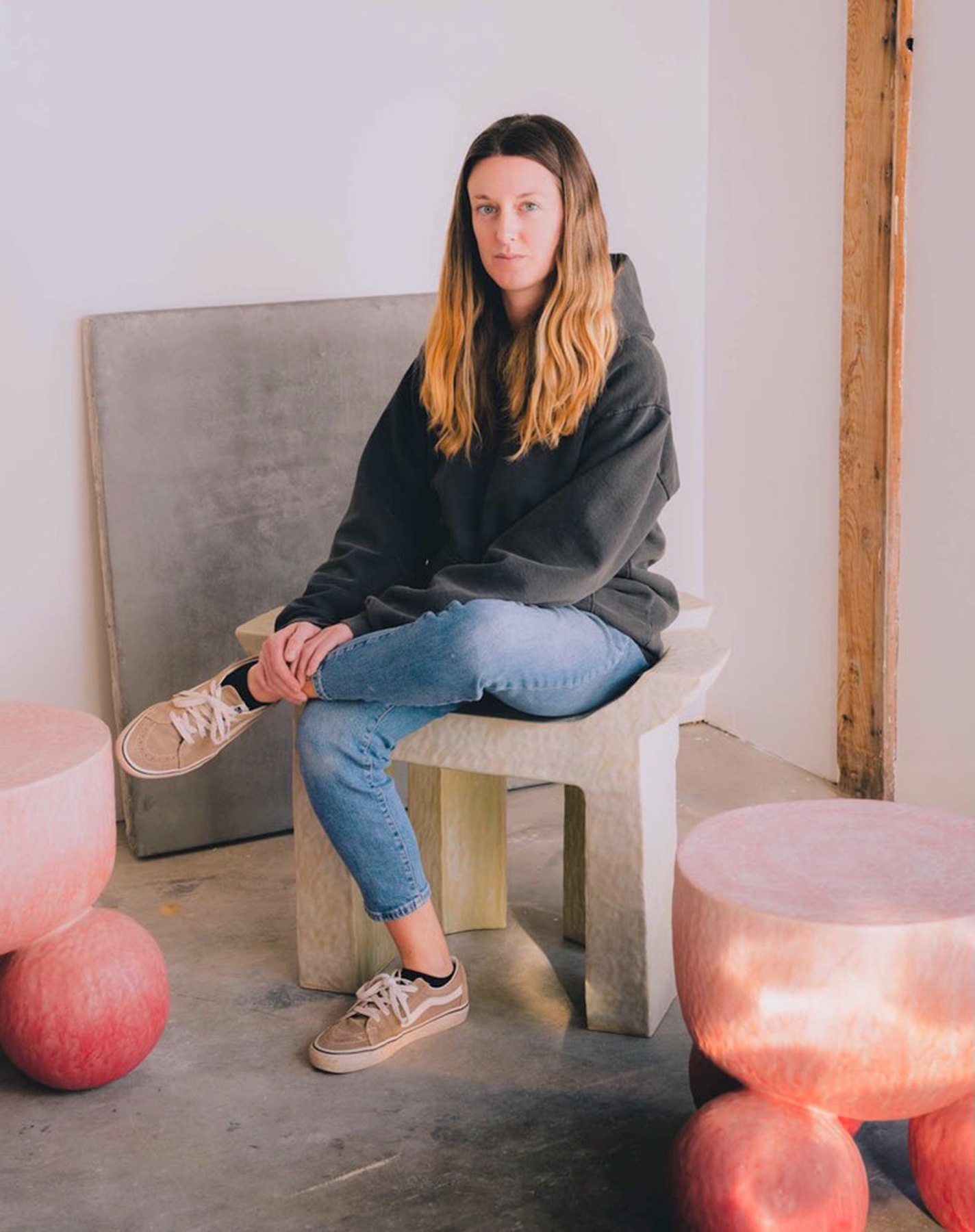
Kelsie Rudolph sits on furniture she made.
